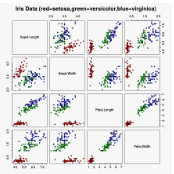Iris Presentation Attack Detection (PAD) is essential to secure iris recognition systems. Recent iris PAD solutions achieved good performance by leveraging deep learning techniques. However, most results were reported under intra-database scenarios and it is unclear if such solutions can generalize well across databases and capture spectra. These PAD methods run the risk of overfitting because of the binary label supervision during the network training, which serves global information learning but weakens the capture of local discriminative features. This chapter presents a novel attention-based deep pixel-wise binary supervision (A-PBS) method. A-PBS utilizes pixel-wise supervision to capture the fine-grained pixel/patch-level cues and attention mechanism to guide the network to automatically find regions where most contribute to an accurate PAD decision. Extensive experiments are performed on six NIR and one visible-light iris databases to show the effectiveness and robustness of proposed A-PBS methods. We additionally conduct extensive experiments under intra-/cross-database and intra-/cross-spectrum for detailed analysis. The results of our experiments indicates the generalizability of the A-PBS iris PAD approach.
翻译:最近的iris PAD解决方案通过利用深层学习技术取得了良好的业绩。然而,大多数结果都是在数据库内情景下报告的,而且还不清楚这些解决方案能否在数据库中广泛推广并捕捉光光谱。这些PAD方法由于在网络培训期间进行二元标签监督而面临过分适应的风险,因为网络培训期间的二元标签监督服务于全球信息学习,但削弱了对地方歧视特征的捕捉。本章介绍了一种新的基于关注的深像素的深入二进制监督(A-PBS)方法。A-PBS使用精细精密的像素/分级提示和关注机制来捕捉到精细的像素/分级提示和关注机制来引导网络自动找到对准确的PAD决定贡献最大的区域。对6个NIR和一个可见光亮的iris数据库进行了广泛的实验,以显示拟议的A-PBS方法的有效性和稳健性。我们在内部/跨数据库和内部/跨频谱中进行广泛的实验。我们的实验结果表明,ADS-PB方针的一般性。



